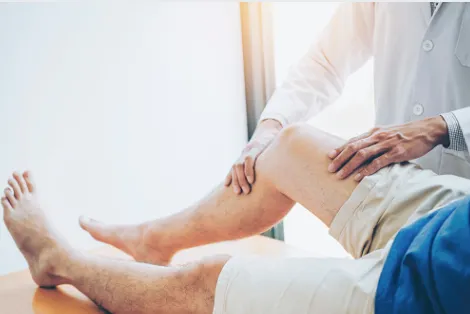Have you ever skipped out on fun outings or activities like hiking because you feel like you weren’t able to keep up? Or maybe the day after a hike, you feel like you’ve completely worn your knees out? How about when going up the steps, you feel a “catch” and/or hear crackling when you either bend or straighten your knee? If so, welcome to the club […]
Knee pain is a common complaint amongst a wide variety of people from young adults to older adults, and it can be associated with wear and tear from common everyday activities such as walking, bending down to pick something up, standing, and lifting. In young adults, it is more prevalent in athletes who run or play sports that require a lot of running, jumping, and cutting. No matter the cause, knee pain is knee pain, and it can be debilitating.
Now, before jumping into conclusions when experiencing knee pain, it’s important to identify the true key cause of it. For example, most active young people will have a sports-related knee injury and immediately assume it’s an ACL (anterior cruciate ligament) problem. People over 50 might assume that it’s arthritis. Although those are possible, they might not be the true cause of knee pain. You can only successfully treat the pain if you know the root cause of it! So, the obvious question here is: “What is the cause of my knee pain and how can I prevent it?” Before you consider completely avoiding hiking and/or sports activities or thinking a knee brace or supportive shoes will do the trick, let’s talk about pinpointing the issue.
It isn’t rocket science to know how to simply relieve your knee pain. Ice, rest, and stretch it, right?? Partially correct, BUT there’s more to it than that! There are various types of knee pain, which can be caused by different parts of the knee, including tendons, ligaments, cartilage, and even bone. Therefore, it’s important to see a physical therapist when experiencing it because as movement experts, physical therapists are highly educated with narrowing in on the issue, breaking it down, and analyzing the movement to then create a strategy for recovery.
First… Let’s talk about prevention! The best way to prevent knee pain or knee injuries from recurring is by maintaining the gains made from physical therapy, staying active, maintaining a healthy weight, and limiting excessive stress on the knees! Bottom line… KEEP MOVING. Your body loves movement. There’s a saying, “motion is lotion,” meaning movement is therapeutic for the knees and can help prevent pain. Moving regularly keep joints and soft tissues more flexible and less painful.
Let’s continue to delve into prevention! Before any type of activity, here’s a combination of things to consider doing: warm up, cool down, stretch, and avoid overexerting yourself.
Warm up: Your muscles need to “warm up” in order to optimally perform. Get that body temperature up a little and your blood flowing!! A warm-up is the prep before the performance and should be done actively and dynamically by doing things like lightly jogging, various hopping or jumping motions, and sport-specific drills.. If you are an athlete, look into making sure you’re warming up correctly and using the CORRECT body mechanics before you perform and go all out. It is highly recommended that athletes partake in preseason conditioning programs to focus more on agility, core strength, and landing mechanics.
Cool down: After physical activity, you shouldn’t just immediately sit down as this could cause your joints, especially your knees, to stiffen up and become inflamed. It would be a good idea to just take a victory lap or walk a bit to keep your breathing under control and let your body temperature naturally come down.
STRETCH: This cannot be emphasized enough. Maintaining flexibility mainly in the joints surrounding the knees (hips and ankles) is crucial if you want to reduce or minimize the chances of getting a knee injury.
And finally, DON’T overdo it! We all know that by overdoing it, you’re basically looking for an injury. Know your limit and build yourself up from the bottom. Consider things like a recumbent bike over a treadmill if you’re already susceptible to knee pain. Or you can try walking on the treadmill on an incline instead of running.
Lastly, remember, when it comes to strengthening the knees, don’t just limit it to strengthening the quadriceps and hamstrings. You also want to make sure you’re including your glutes (hip muscles), and core muscles in your strengthening routine as well!

The bottom line is, if you feel like you’ve done everything explained above (stretching, strengthening, dynamic warm-ups, etc.) and you are still experiencing knee pain, you’re the perfect candidate for physical therapy. Let me remind you that physical therapists are movement experts and are highly skilled in creating appropriate strength and flexibility exercises catered to your particular activity! They ensure that you maintain your proper form and correct body mechanics. Knee pain is common and can be debilitating. but life doesn’t have to slow down because of it. Request to see a physical therapist and get back to living your best life!

